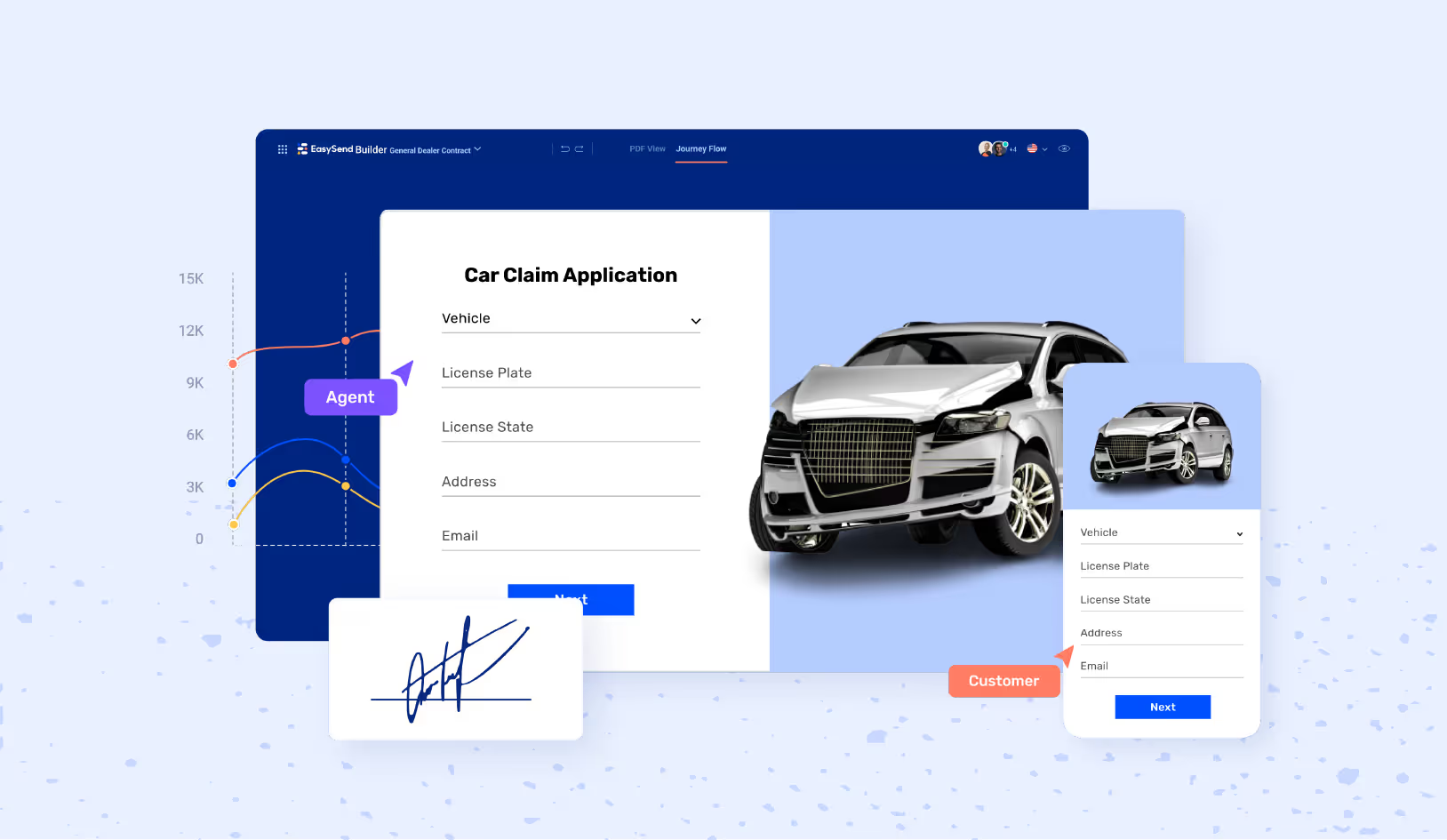Digital technology’s rate of innovation is incredibly rapid, with transformative new advances made year after year, shaking up innumerable industries. The world of insurance is no exception.
Many insurance companies are already waking up to the new digital reality, applying innovative technologies to their business. For example, some organizations have started applying artificial intelligence (AI) and chatbots to improve customer service, blockchain for verifying coverage, and hyperautomation to streamline operations.
Here are just some of the innovative technologies that you can expect to disrupt the insurance industry in the next five to ten years:
- Low-code and no-code tools will allow professionals without IT knowledge to manage and update apps and software. These tools use intuitive drag-and-drop style interfaces to implement the latest UX and UI features that today’s customers are demanding.
- Artificial Intelligence will be increasingly used to improve efficiency, automate underwriting and claims processes, identify new revenue sources, and identity, assess, and underwrite emerging risks.
- Predictive analytics has a variety of applications including pricing selection, identifying fraud risks, identifying customers at risk of cancellation, and more.
- Internet-connected devices such as smart homes, automobiles, and wearables provide data which can be used to determine rates and mitigate risks.
- Telematics technology can track driving data such as speed, location, and distance to improve risk management and create tailored insurance plans.
- Social media data is mined to improve risk assessment, better detect fraud, and improve the customer experience.
- Machine learning can automate claims processing, policy administration, and risk assessment.
- Chatbots will power nearly all customer interactions.
- Blockchain will simplify identity management and verification while ensuring the safety of customer data.
All of these innovations are incredibly exciting and have the potential to offer serious benefits to both insurers and customers, such as reducing costs, improving customer experience, eliminating fraud risks, and more. However, if you want to be able to benefit from any of these new technologies, your company needs to start transforming the way you collect customer data now.
To stay ahead of competitors - especially younger, more agile startups that are disrupting the market - insurance companies must make sure they’re prepared to take advantage of these innovations as quickly as possible. This agility, however, requires a certain degree of digital maturity.
But there’s one major barrier to true digital maturity in the insurance industry: manual data collection.
Insurers need to intake data and signatures from customers in order to drive core business processes from all touchpoints, including policy sales, claims, and policy updates. This is where manual data collection becomes such a sticking point, causing massive operational inefficiencies and friction.
The hard truth is that manual data collection is simply incompatible with the demands of the digital future. Here is why.

Manual data collection is incompatible with digital technology
If your organization is still relying on manual data collection processes, such as paper forms, a print-sign-and-scan model, PDF forms, or data collection via call centers, you’ll find yourself having a hard time implementing any of the innovative technologies.
While it may be difficult to overhaul processes that have been in place for years and even decades, manual data collection is a major barrier to innovation, preventing your organization from embracing new business models and taking advantage of the benefits new technology has to offer.
Manual data collection doesn’t meet customers’ expectations
Manual data collection is incompatible with the standard of digital experience that customers demand.
[.figure]78%[.figure]
[.emph]of customers have backed out of a transaction because of poor customer experience.[.emph]
Today’s modern consumer has high standards for their interactions with businesses. They want to be able to get things done quickly. They want to be able to do them from wherever they happen to be located, without having to go into a branch of your offices. They want to be able to use their own devices, especially their mobile phones.
They expect their experience on your website or application to be streamlined and easy to follow, without any complicated or confusing steps. And they want it to be personalized, with 66% of customers expecting companies to understand their needs and expectations.
Fail to meet these expectations and you might just lose your customer: 78% of customers have backed out of a transaction because of poor customer experience.
Manual data collection isn’t compatible with hyperautomation
Hyperautomation is turning out to be a game-changer in many industries, from banking to insurance.
In addition to reducing processing time and costs (we’re talking average cost savings of 45% for invoice processing alone, according to McKinsey), hyperautomation also improves customer satisfaction, increases operational efficiency, improves compliance, and helps to mitigate risk. Hyperautomation also increases innovation and agility. Automating routine tasks frees up staff, allowing them to focus more on innovation and creativity.
The problem? While manual data collection can be automated, the data needs to be in a unified digital format in order to fully automate your workflows. So if you think that you might be able to get away with keeping your manual data collection processes with stopgap solutions, think again.
While technologies like optical character recognition (OCR) can convert an image of text into a machine-readable text format, they do not address the root cause of the problem. You’ll still be dealing with the inherent incompatibility of manual data collection with the new digital technology reality.
As a result, insurance companies that collect data manually are struggling to implement new business models that rely on hyperautomation technologies.
But there is a solution that works
There’s simply no way around it: If you want to keep up with where the insurance industry is headed, manual data collection has got to go.
We know this can be a hard pill to swallow, but digitizing data intake is crucial in order to take advantage of game-changing technologies.
Bottom line - you simply can’t achieve the digital when you’re still relying on outdated manual data collection methods. Only by making the change to collecting customer data in digitally-native formats will insurance companies be able to position themselves to take the lead in the increasingly digital future. In fact, we’d go so far as to say that it should be the first thing on your digital transformation roadmap for the next five to ten years.
Thankfully, it doesn’t have to be too hard or expensive to digitize your processes. Using no-code technologies, for example, will allow you to turn your managed data collection processes into streamlined, automated customer journeys - no coding knowledge required!





